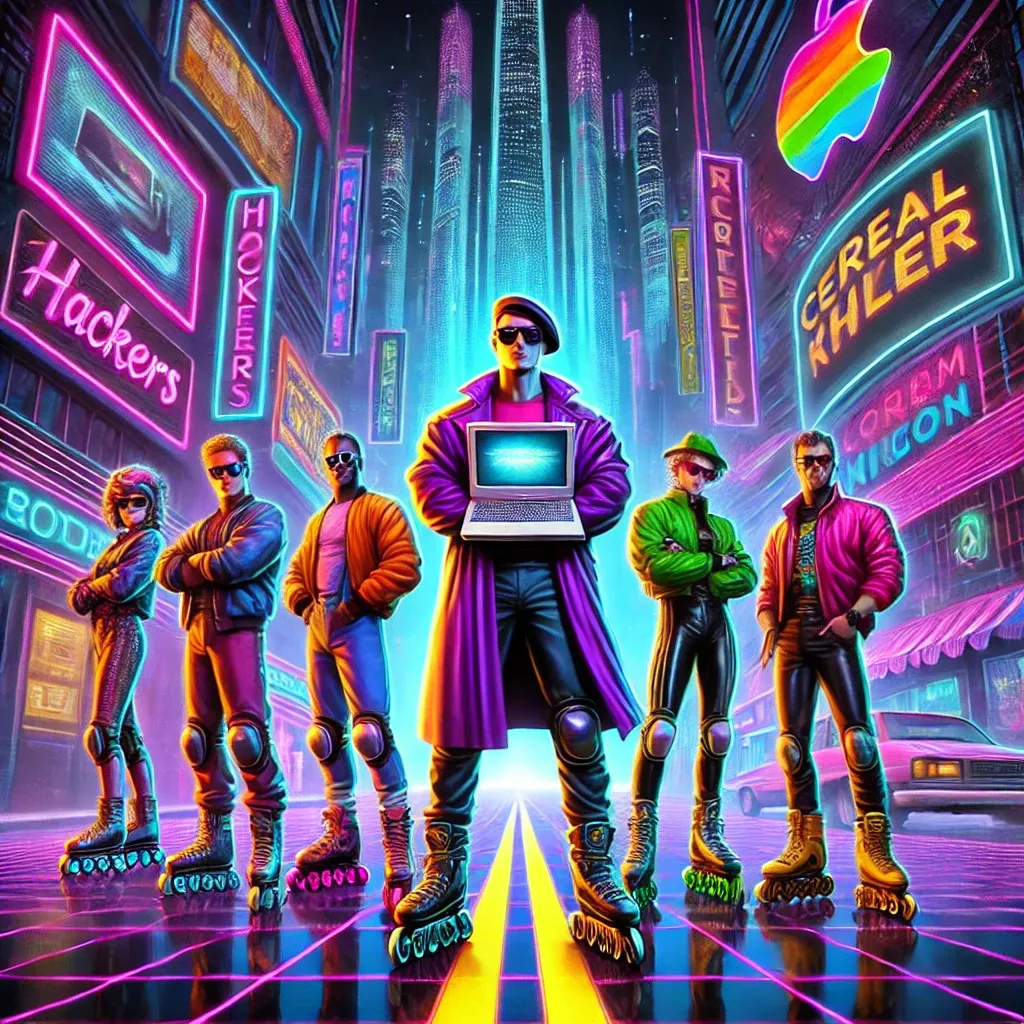Hack The Future: Did The Movie Hackers Predict The Future?

Did Hackers Predict the Future?
If you’ve never seen the 1995 cult classic Hackers, you’re missing out on one of the most entertaining and gloriously exaggerated portrayals of early internet and hacker culture. The neon-lit, rollerblade-filled world of rebellious teenage hackers might not be the most accurate depiction of how tech worked in the 90s, but it definitely captured the imagination of an entire generation of tech enthusiasts. And while Hackers is mostly remembered for its over-the-top style and hilarious takes on hacking, there’s a small moment in the movie where it made a surprisingly accurate prediction about the future of computing: RISC architecture.
A Quick Rundown for the Uninitiated
Hackers follows the story of Dade "Zero Cool" Murphy, a hacker who, as an 11-year-old, caused one of the most infamous hacks in history—crashing 1,507 systems and wiping out Wall Street. Fast forward to his teenage years, Dade is now in high school and, after years of being banned from computers, finds himself drawn back into the world of hacking. He meets a crew of fellow misfits, including Kate "Acid Burn" Libby, and they uncover a massive financial heist orchestrated by a corrupt security officer, Eugene "The Plague" Belford.
With its rollerblades, hacker handles, flashy hacking montages, and the unforgettable "Mr. The Plague", Hackers perfectly captures the cyberpunk aesthetic of the 90s. And while the movie’s depiction of hacking is laughably far from reality (no, you can’t hack the Gibson with 3D visualizations), it’s filled with some genuinely interesting tech references that feel oddly prophetic in hindsight.
Throw in Cereal Killer, the wild conspiracy theorist of the group, and Lord Nikon, the walking database with a photographic memory, and you’ve got a cast of characters who, while ridiculous, made the movie a blast to watch.
But among all the wild antics, there’s one moment that stands out for getting something surprisingly right.
The Scene: RISC Architecture Gets Its Moment
During a party scene, Dade and Kate share a quiet moment alone, and, naturally, they geek out over Kate’s laptop. Here’s the full exchange:
Kate: "P6 chip. Triple the speed of the Pentium."
Dade: "Yeah. It's not just the chip, it has a PCI bus. But you knew that."
Kate: "Indeed. RISC architecture is gonna change everything."
Dade: "Yeah. RISC is good."
At the time, this sounded like typical movie tech-speak, but there’s a nugget of truth buried in that dialogue. RISC (Reduced Instruction Set Computing) was an emerging architecture in the 90s, and while it was far from mainstream, it was starting to make waves in the computing world, particularly in high-end workstations. It was a forward-thinking reference in the middle of a movie that was otherwise more about style than substance.
What Hackers Got Right About RISC Architecture
RISC is a processor design that uses a simplified set of instructions, allowing for faster, more efficient processing. In the 90s, RISC processors were mainly found in supercomputers and high-performance workstations, far from the consumer hardware most people had access to. But the concept behind RISC—doing more with less—was revolutionary for its time.
Fast forward almost 30 years, and RISC architecture, particularly in the form of ARM chips, powers billions of devices. Today’s smartphones, tablets, and even some cloud infrastructure run on ARM architecture, which is based on the same RISC principles mentioned in Hackers.
Back in 1995, PCI buses were still a cutting-edge technology for most users, and while it wasn’t as common in home computers, Kate’s laptop was portrayed as an absolute beast of a machine. Throw in the reference to RISC, and suddenly this bit of dialogue becomes a surprisingly accurate prediction of where computing was headed.
How RISC (ARM) Took Over the World
Today, ARM chips, based on RISC architecture, are everywhere. Nearly every smartphone, from iPhones to Android devices, runs on ARM architecture. This design is lightweight, power-efficient, and fast, making it ideal for mobile devices and IoT technology. But it doesn’t stop there.
ARM has made huge strides in data centers and cloud infrastructure. Companies like Amazon are now using ARM-based processors to power parts of their cloud services. Even Apple has made the jump from Intel processors to its own M1 and M2 chips, which are built on ARM architecture. In other words, RISC really did “change everything,” just like Kate said in that party scene.
The Prophetic Power of Hackers
So, did Hackers predict the future? Not entirely—you're not going to be hacking supercomputers with virtual reality visuals and rollerblades anytime soon. But when it comes to RISC architecture, the movie hit on something real. At the time, it was just a geeky reference, but today, RISC is the backbone of many of the devices we use every day.
Kate’s offhand mention of RISC and PCI buses might have been a bit of hacker flexing, but it turned out to be a remarkably accurate glimpse into the future of computing.
In Conclusion: Hack the Future
Hackers is far from an accurate representation of real-world hacking, but it captured the spirit of the 90s and the excitement around the potential of technology. And, in its own quirky way, it managed to predict one of the most important trends in modern computing: the rise of RISC architecture.
So, while Hackers is more of a fun cyberpunk ride than a tech tutorial, it got at least one thing right—RISC really did go on to change the world, just like Kate and Dade predicted.
-Tech Thoughts
--Bryan